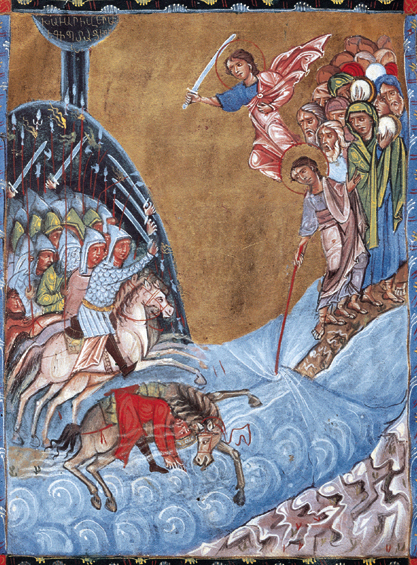Image Details

David Harris
The Egyptians meet their fate as Miriam (far right, with tambourine) sings on, as depicted in this Armenian manuscript known as the Ritual Book, illustrated by Thoros Roslin in 1266. In the standard biblical text, Miriam’s hymn at the Red Sea is but one sentence long: “Sing to the Lord, for he has triumphed gloriously; horse and rider he has thrown into the sea” (Exodus 15:21). But the Dead Sea Scroll manuscript known as 4QReworked Pentateuch adds seven lines to Miriam’s song. Whether this addition would have affected the authority of the text, scholars cannot say; it apparently did not continue to be copied in the late Second Temple period, which suggests that it was never fully accepted as authoritative. But what seems certain is that the scribe’s reworking of the text attested to its sacred importance—an unimportant text would not enjoy the attention of generations of scribes and interpreters.
